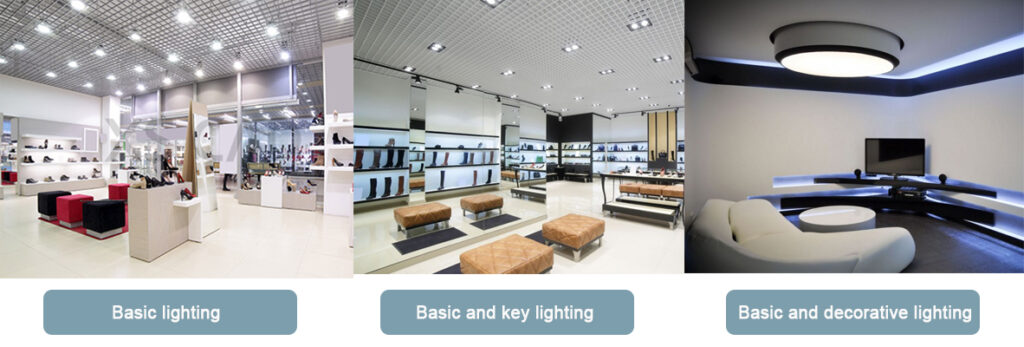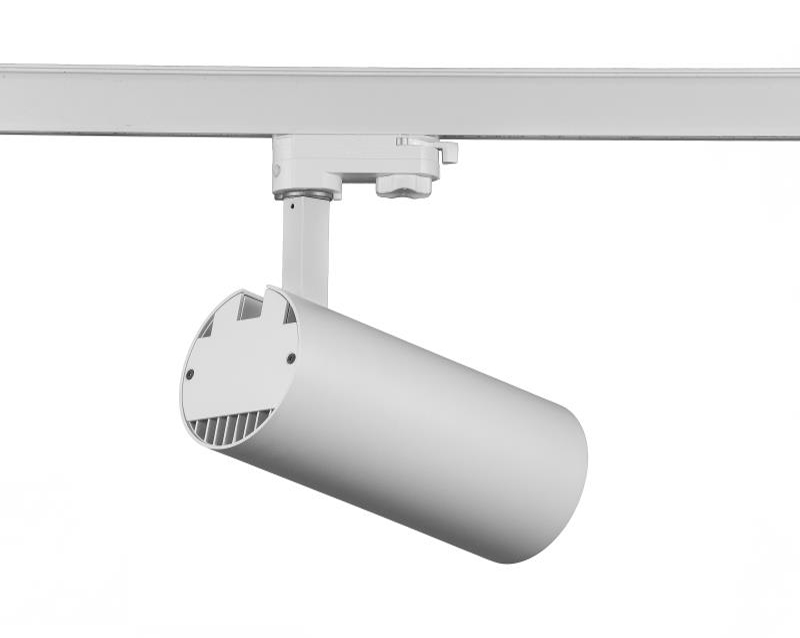3 ways to lighting for commercial Spaces
By Powerstar

There are three types of lighting for commercial spaces: basic lighting, key lighting and decorative lighting.
Basic lighting design points:
Basic lighting, also called ambient lighting, is generally reflected from the view of an overall store to the ceiling or near it.
A: There is generally no direction. The lamp configuration can be modified in-store to change the product configuration. This allows for flexibility and adaptability.
B: The store’s brightness should be approximately equal. The uniformity of lighting is more important the darker the place.
C: Basic lighting must be used in areas where key lighting and basic lighting are combined. The key lighting should be 3-6 times the level of basic lighting.
D: For basic lighting, choose a light source that has a high color rendering index. This is especially important for commodities that must recognize different colors.
E: Ceiling lighting is available in two options. One can be evenly distributed and one can be distributed uniformly. This ensures that the work surface is illuminated even.
F: Reflective lighting should be combined with direct down lighting. This makes it easy to beautify your environment and provide more illumination. Single reflective lighting is not recommended.
G: The lamps may be embedded, reflective or both.

Key lighting design points:
The purpose of key lighting for commercial spaces is to highlight key commodities and important display areas to increase customer’s desire to purchase. This type of lighting is known as the “focus lighting” of commercial spaces.
A: For this type of location, you will need to use basic lighting with low illumination
B: The illumination of key lights depends on the type, size, and display method for the commodity. It should be balanced against the basic lighting in store. In general, key lighting is about 3-6 times the level of the basic lighting.
C: Use a light source with a high Ra value to accurately reflect the color of the commodity. D: Pay close attention to key lighting and material sensing performance
Points of design for decorative lighting:
Commercial lighting is used to enhance the appearance of the store. It can also be used to beautify the space to increase customer satisfaction.
A: Decorative lighting can be described as an independent lighting technique that is distinct from key and basic lighting. It serves a decorative purpose. Beautiful lamp design ceiling lamp pattern layout chandelier arrangement wall lighting layout design
Decorative lighting can not replace key lighting and basic lighting. The brightness of the decorative lighting should not exceed that of the overall lighting.The purpose of decorative lighting in a store is to brighten up the environment and make customers feel more comfortable. These are the techniques that are used:
There are many lighting options available, including key lighting, basic lighting, and decorative lighting. However, special lighting techniques such as column lighting and wall lighting can be used to meet the specific lighting needs of commercial spaces.
The key points to wall lighting design:
A: The indoor and wall illumination are balanced, with the wall illumination being 2 to 3 times the work face.
B: Wall decoration materials such as color and reflectivity are important. If the wall has a dark color it will not be able to meet the brightness requirements.
C: Wall lighting can also be used for commodity display lighting. It is important to take into account the product’s characteristics and to pay particular attention to the light source, position, and projection angle.
Cylindrical lighting:
A. Direct lighting: The lamp tray, or downlight, is placed on the top surface of the cylinder at a distance from the surface. This allows the light source to directly produce the downshining light that illuminates the surface.
B. Indirect lighting: Use of fluorescent tubes embedded into the light groove at the top surface to reflect the light off the facade columns.
C. Internal light transmission technique: This increases the area of light that is illuminated in vertical plane, which helps to increase the utilization rate.






